Russian Deputy PM Due To Visit Iran On Tuesday
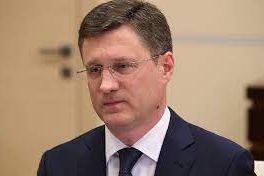
Russian Deputy Prime Minister Alexander Novak will visit the Islamic Republic of Iran on May 16, Iranian local media reported on Sunday.

Russian Deputy Prime Minister Alexander Novak will visit the Islamic Republic of Iran on May 16, Iranian local media reported on Sunday.
Novak is expected to meet with Iranian Oil Minister Javad Owji and Central Bank Governor Mohammad-Reza Farzin during his two-day stay in Tehran.
He will also attend the 27th International Oil, Gas and Petrochemical Exhibition opening in Tehran on May 17.
There were no details provided about the Russian delegation or topics of the upcoming agenda.
Iranian Deputy Oil Minister Ahmad Asadzadeh said on April 25 that Novak and Russian Central Bank Governor Elvira Nabiullina will visit Iran in May for trade and economic agreements.
As tension between the United States and Iran have increased since last year, Tehran and Moscow have been trying to boost bilateral relations.
As nuclear talks broke down with Iran last September and Russia's invasion of Ukraine dragged on, the United States and Europe imposed more sanctions on Iranian and Russian entities and the two pariah states expanded their ties.
In July, the National Iranian Oil Company (NIOC) and Russian gas company Gazprom signed a memorandum of understanding (MoU) worth $40 billion. NIOC and Gazprom CEOs signed the deal on the day Russian President Vladimir Putin arrived in Tehran for a summit with his Iranian and Turkish counterparts.
There were many projects covered by the MoU, including expanding the Kish and North Pars gas fields, improving the South Pars field, developing six new oilfields, increasing gas and product swaps, completing various liquefied natural gas (LNG) projects, and building gas export pipelines, to name a few.
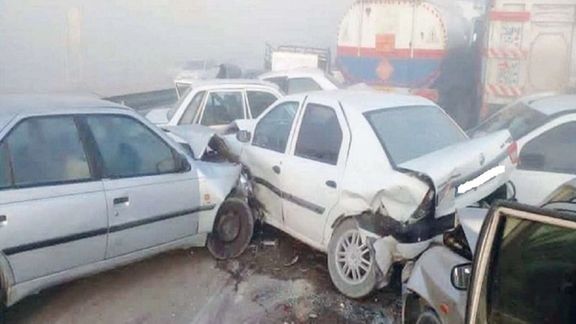
Traffic police in Iran says in the last 10 years, the quality of domestically produced cars has not improved “even ne percent.”
Deputy Traffic Police Chief, Taymour Hosseini told Tasnim news agency on Sunday that Pride and Peugeot 405 still cause fatal accidents although their production has stopped. Both cars are copies of much older foreign cars produced with inferior quality.
“The authorities have announced the production of Pride and Peugeot 405 has stopped, but in practice similar cars are being produced,” he added.
According to Hosseini, the number of people killed in road accidents has even increased in recent years.
"According to figures announced in the past Iranian year [ending on March 20], 19,491 people lost their lives in traffic accidents, which shows a 16% increase compared to the previous year,” he underlined.
Meanwhile, Kamal Hadianfar, Traffic Police Chief, said in a press briefing on Sunday that "Last year, two to three people died in car accidents every hour, while 25 others were injured.”
Many Iranian officials and authorities, including President Ebrahim Raisi, are critical of the local car industry, with pundits blaming a “mafia-like” influential group behind a ban on car imports, to eliminate competition.
Hadianfar once described Iranian cars as “death wagons”, and criticized manufacturers for importing parts from China, saying there is no effective quality control.
Iran's automotive industry, the county’s largest after oil and gas, employs 700,000 workers.
With around 20,000 annual deaths, Iran has a poor traffic safety record. According to World Health Organization (WHO) data published in 2018, road traffic accident deaths in Iran reached 21,831 or 6.5 percent of all fatalities.

Father of two victims who died when Iran’s IRGC shot down a Ukrainian airliner says the regime still refuses to release documents proving the act it was intentional.
Dr. Mohsen Asadi-Lari, a former high-ranking health ministry official who lost both his children, Mohammad-Hossein and Zeinab, in the downing of the Ukrainian plane on January 8, 2020,told Didbaniran website Sunday that there is evidence the shooting was intentional, but the authorities would not release the evidence.
Iranian authorities who first claimed it was air crash due to a mechanical problem, three days after the incident admitted the plane was shot down with 176 people onboard, but insisted that it was due to human error.
Asadi-Lari said they asked the court to investigate the evidence proving that firing of two anti-air missiles at he plane was intentional and also demanded that the data to be released to them, but the court did not pay attention. He said that the information recorded on the plane’s flight recorder – known as the black box -- would definitively impact the final rulings.
He added that the conversations between the plane and the control tower can shed light on the circumstances of the missile attack. “We are sure that he deliberately triggered the attack and we have raised this in the court in different ways," he said about the missile operator.
Asadi-Lari added that the prime suspect in the case, identified as a Major Mehdi Khosravi, will be released in the near future because according to Iran’s laws he has spent about a third of his sentence. More than three years have passed since the incident and Khosravi was sentenced to 10 years in prison.
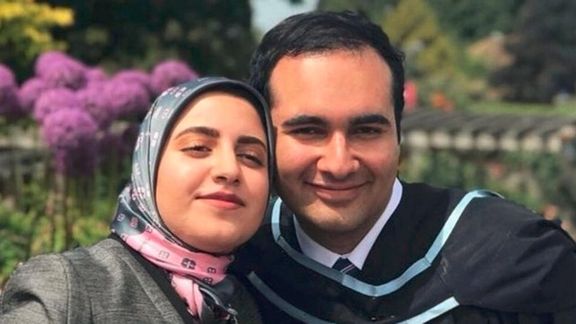
He claimed that Khosravi has been kept in solitary confinement since January 2020, saying, “Anyone familiar with Iran’s prison and judicial matters knows what it means to be in solitary confinement.” His remarks implicitly pointed to the fact that the regime does not want him to talk about the details of the incident.
“Compare the case of this plane with the case of the executed protestors, who were hanged for blocking a street or setting fire to a trash bin,” he said, adding that 176 innocent people were killed, and the culprit can go free after 40 months in prison.
Asadi-Lari clarified that the family do not seek execution for the officer because he was a service member and was doing his job, but they want the truth to be revealed.
Asadi-Lari and his wife Dr. Zahra Majd earlier insisted that the ten low-ranking military personnel on trial are not the real culprits. They claimed Khosravi was an expert in the Tor-M1 surface-to-air system that shot down the plane and that it was unbelievable that he had made the decision based by error.
Ukraine's flight PS752 was shot down on January 8, 2020, as it took off from Tehran’s Imam Khomeini International Airport. Only hours earlier, the IRGC had fired more than a dozen missiles at Iraqi bases hosting US troops in retaliation for the killing of the IRGC Qods Force Commander Qassem Soleimani by a targeted US drone strike just five days earlier.
Despite expecting retaliation from the US, the IRGC which is responsible for air defense of the capital did not close the civilian airspace in the early morning hours of January 8.
Asadi-Lari and his wife, both professors at Iran Medical Sciences University, say the whole family, including their two children who were students in Canadian universities, were devastated by Soleimani's killing and were very worried about a US retaliation for Iran's missile attack while the family was on their way to the airport. Before the flight took off, their son Mohammad-Hossein had been praying for Soleimani who was buried the day before.
Unlike parents and family members of many other victims of the tragedy, the Asadi-Lari family are not members of the Canada-based association representing victims' families. The association does not recognize the eligibility of the Islamic Republic's Judiciary for investigating the incident and has repeatedly called for top Iranian officials, including Supreme Leader Ali Khamenei, as commander-in-chief of the Armed Forces, to be held responsible.
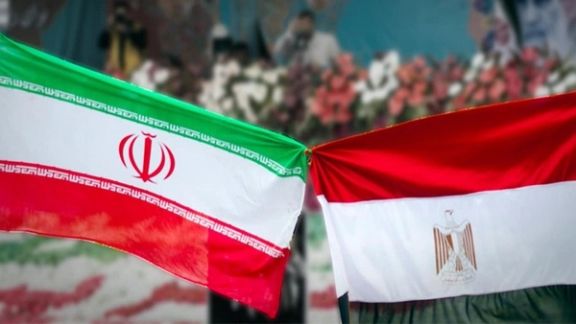
Iran is looking towards mending fences with Egypt in the wake of Tehran signing a China-brokered deal for détente with Saudi Arabia.
Iranian lawmaker Fada-Hossein Maleki, a member of the parliament’s National Security and Foreign Policy committee, said in an interview with Tasnim news agency published Sunday that talks to bolster ties between Iran and Egypt are being held regularly in Iraq.
It comes amid recent reports of Oman hosting Iranian and Egyptian officials for talks.
Maleki said: “Restoring relations between Iran and Egypt is very important... In the near future, bilateral relations will be restored, and we will witness the opening of embassies in both countries.”
Egypt has maintained diplomatic representation in Tehran since the Islamic revolution. However, the countries have only chargés d'affaires running the missions.
Malekei said that after the mooted reestablishment of ties Iranian President Ebrahim Raisi will hold a meeting with his Egyptian counterpart Abdel Fattah El-Sisi.
Also on Sunday, Iranian Foreign Minister Hossein Amir-Abdollahian told IRNA: “We have always welcomed the improvement of relations between Tehran and Cairo.”
Tehran and Cairo’s history of on and off relations predates the establishment of the Islamic Republic. Iran’s relations with Egypt, a close ally of Saudi Arabia and other Persian Gulf nations, have been fraught since the Shah fell in 1979. His subsequent refuge in Egypt, where he died and was buried in 1980, then ruled by President Anwar Sadat, damaged relations.

Iran named a street after Khaled Eslamboli, the man who assassinated Sadat because he gave asylum to the Shah. The name was changed following the resumption of ties with Saudi Arabia in anticipation of further extending the regional rapprochement.
Relations improved after President Hosni Mubarak resigned in 2011. In April 2012, Iran appointed an ambassador to Egypt weeks before then-president Mohamed Morsi visited Iran. However, continued tensions between Iran, Saudi Arabia and allied Western nations have long proven to be an obstacle.
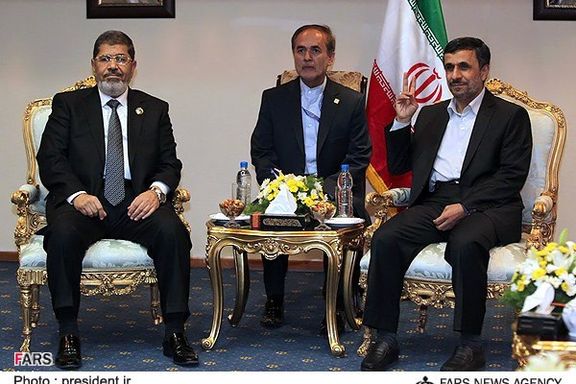
After years of bad relations, Iran and the Kingdom recently reached an agreement to end a seven-year diplomatic rift. Upon the visit of Iran's Minister of Economy to Saudi Arabia, Riyadh on Friday introduced its new ambassador to Tehran.
After Foreign Ministry spokesman Nasser Kanaani welcomed the Tehran-Riyadh détente, he added: “Egypt is an important country and the two countries value each other in the region. The region needs the synergy of Tehran and Cairo.”
In May, Hojjatollah Joudaki, a former Iranian diplomat in Egypt, said Tehran may be replacing idealism with pragmatism to end the long-standing impasse in its foreign policy, noting that a recent trend of changing tens of street names in Tehran could be the first move.
Qatar-affiliated media outlet Al-Arabi Al-Jadeed reported in June that Cairo and Tehran had agreed on “gradual expansion of Tehran-Cairo relations as well as coordination on the situation in the Gaza Strip and Syria.” The London-based pan-Arab daily also reported that Egyptian and Iranian intelligence official held a meeting in which Egypt warned Iran not to target Israelis on its territory.


Israel’s prime minister says his forces have eliminated virtually the entire leadership of Tehran-backed Islamic Jihad in Gaza.
Benjamin Netanyahu told his cabinet on Sunday: “We changed the equation thwarting the entire top echelon of the Islamic Jihad in Gaza."
Netanyahu commended the success of the operation "Shield and Arrow" in the Gaza Strip during the meeting.
As part of the operation, which lasted almost five days, the Israeli military killed several Islamic Jihad commanders and targeted strategic positions and weapons stocks.
A ceasefire was agreed between Israel and the Palestinians on Saturday evening, and came into effect at 11 p.m. It has so far been respected.
Netanyahu did not mention the ceasefire. However, according to The Times of Israel, National Security Adviser Tzachi Hanegbi thanked Egyptian President Abdel-Fattah el-Sisi for facilitating the agreement.
Washington welcomed the ceasefire agreement on Saturday, thanking Egypt and Qatar for their efforts.
The latest round of confrontation did not involve Hamas, and only Iran's main ally, the Islamic Jihad took part.
Iran urged Hamas to join Islamic Jihad in the new round of attacks following the killing of three militants in Gaza, Iran International had learned.
According to informed sources, Tehran exerted strong pressure on Hamas to repay assistance it has received over the years, and unite with Islamic Jihad to launch a fresh wave of attacks.
During the conflict, the terror group fired nearly 1,300 rockets, including about 1,000 rockets that hit Israeli territory. Two people were killed in Israel and 33 killed in Gaza.
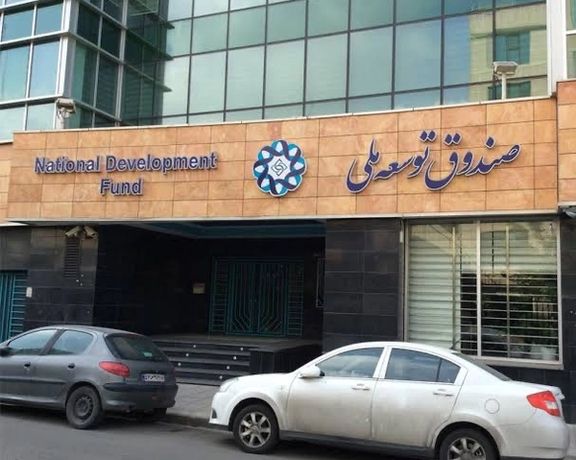
Iran has spent most of its national sovereign wealth fund in the past decade or so amid sanctions, the chairman of the national inspectorate said Sunday.
In the third annual gathering of officials to discuss the National Development Fund (NDF), the chairman of the National General Inspection Organization, Zabiollah Khodayan finally came up with general but clear figures about what the fund represents.
The fund collected $150 billion over the years from saving a portion of Iran’s oil export revenues, but successive governments dipped into the fund and spent $100 billion, while another $40 billion “was borrowed” by state entities, Khodayan said. So, in short, Iran has only $10 billion saved, which is negligible compared with other oil-exporting countries.

In contrast, the United Arab Emirates has more than one trillion dollarssaved in several sovereign wealth funds, an even Oman, the poorest of Persian Gulf oil exporters has $17 billion.
Khodayan argued that the main reason why NDF has not been successful is lack of transparency by the government. While governments dip into the fund to finance their deficits or projects, the public is usually kept in the dark.
Since its establishment in 2000 as a currency reserve to supplement the Oil Stabilization Fund, successive governments dipped into the NDF for current spending, including the withdrawal of billions of dollars for military spending. The administration of President Mahmoud Ahmadinejad (2005-13) borrowed heavily from the fund, which contained $24 billion when he was elected, even though Iran earned an estimated $700 billion from oil exports during his presidency.
This was the highest amount the country had earned during 100 years of oil production. The populist president withdrew $2.7 billion to pay New Year cash handouts to all Iranians in 2013.
In the last three years of Ahmadinejad’s presidency, Iran’s oil exports declined because of international sanctions imposed to force Tehran to accept limits to its nuclear program. After a brief respite in 2016-2018 when the JCPOA nuclear deal was in effect, the United States imposed fresh sanctions in 2018, which slashed oil exports by as much as 90 percent in 2019-2020.
This brief overview of the past shows that although sanctions had a major role in limiting the growth of Iran’s sovereign wealth fund, financial and budgetary mismanagement has also played a role. Otherwise, with saving 20-30 percent of oil export revenues since 2000 should have made the fund worth at least $250 billion.
Another factor is the inefficiency of Iran’s state-controlled economy, which has made the state largely dependent on crude oil exports to finance government budgets.
Khodayan in his remarks also argued that wealth funds should not be considered as instruments for stabilizing the foreign currency markets. He was referring to efforts by successive Iranian governments to dip into the fund to defend the ever-declining national currency, rial. From Ahmadinejad’s time, the rial has declined 50-fold from 10,000 rials to the dollar to more than 500,000.
Although sanctions were the main reason for the disastrous performance of the national currency, capital flight in the past 15 years has played a major role. Government officials have indicated that capital flight has been well over $10 billion a year.
Both Iran’s inefficient economy and its constant confrontation with the United States and its allies eroded investor confidence, which led to people investing in other countries.
Khodayan also complained that although NDF has lent $40 billion for various projects, it has no control over how the money is spent. “The fund has no role in studying projects that receive financing. Also, the Central Bank fails to properly manage eight foreign currency accounts holding the funds.”